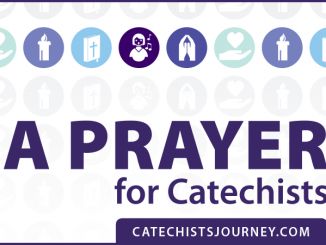
Some years are easier to plan out than others when it comes to the sequence of lessons in faith formation. This year, however, proved to be more difficult than usual. In my parish, the catechists have the flexibility to teach lessons in the order that works best for them. The DRE advises us to make sure our sequence of lessons coincide with the high points of the liturgical calendar. So I sat down with my class calendar a few weeks ago and the list of lessons in our Finding God books, and set about planning.
The first step was simple: block out all special events in the program calendar. I marked our new teaching Masses and returning annual events of the Posada and May Crowning. Then I marked the date for the start of Advent, happily noting that the First Sunday of Advent doesn’t fall during Thanksgiving weekend this year. Then I marked Ash Wednesday and Easter, and that’s when I noticed a challenge for the curriculum plan this year: with our Easter break falling as it does with a later Easter this year, we have no full classes after the holiday. Our May Crowning that concludes each year is the only post-Easter gathering, and the brief time with my group before this event is usually reserved for closing thoughts and farewells. How was I going to approach the Resurrection with my group without an obvious window in the calendar?
I considered a few approaches and landed on doing the sessions normally reserved for the Easter season closer to the midpoint of the year. This may actually turn out to be a blessing in disguise. If we are to be evangelizing, we should spread the joy of the Resurrection even outside the 50-day Easter season. I considered starting the year with the Resurrection chapters, but chose instead to focus first on the public ministry of Jesus before his Death and Resurrection. I want to meet the young people where they are. Most of them know elements of the Christ story, but are not able to piece these elements together. I can bring them to an understanding (or at least a beginning of understanding) of God’s love for us as shown in the historical events of Jesus’ life and in the events of our everyday lives.
By moving the lesson order, the young people should be familiar with the arc of Jesus’ life and his influence on the Apostles before we arrive at Lent. Then we can approach Lent as the season of prayer, fasting, and almsgiving with a better grounding in what brought us there and where it is leading us.
Will the approach work? The next few months will tell us. Good luck to all of you catechists reading this as you bring your particular approaches to sharing the Good News with the young disciples in your group this year!





Be the first to comment